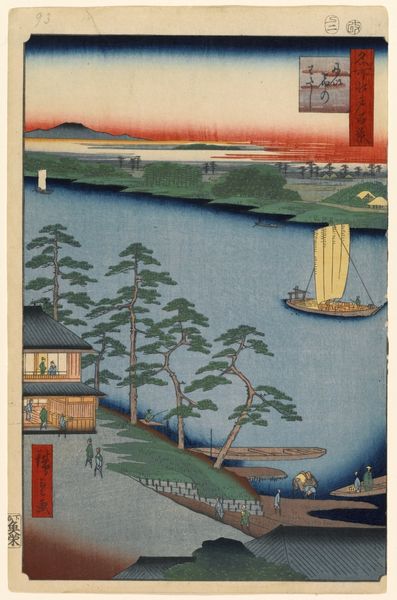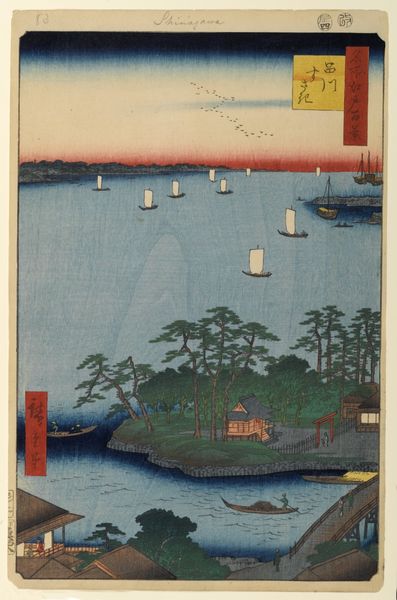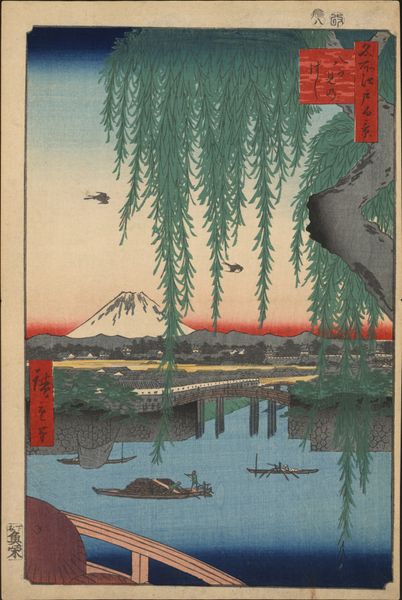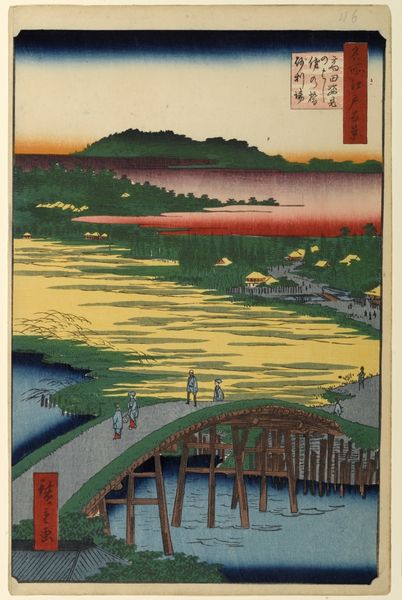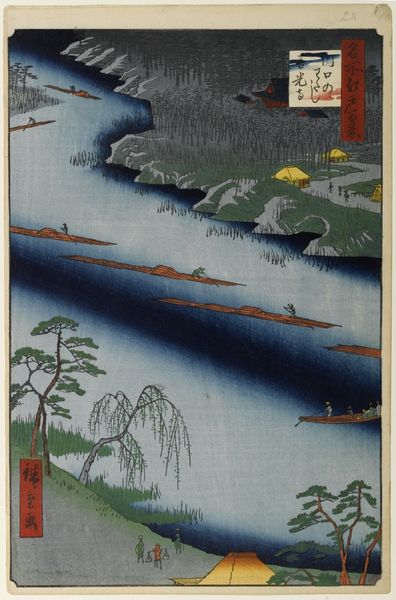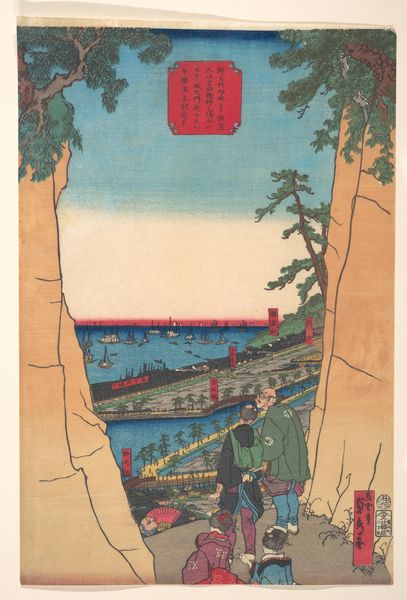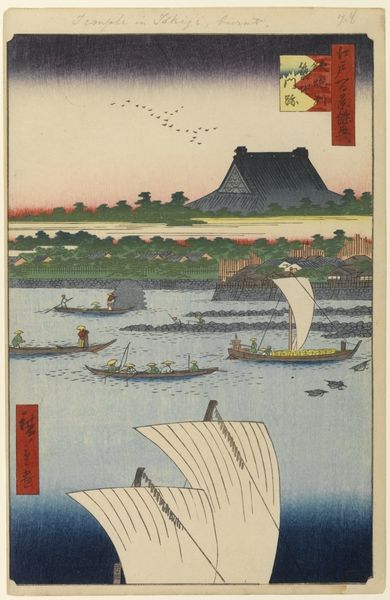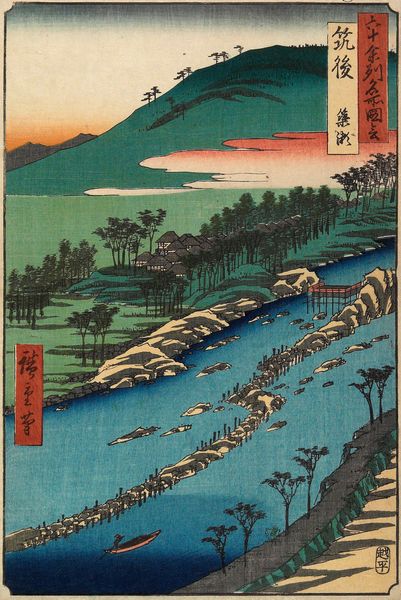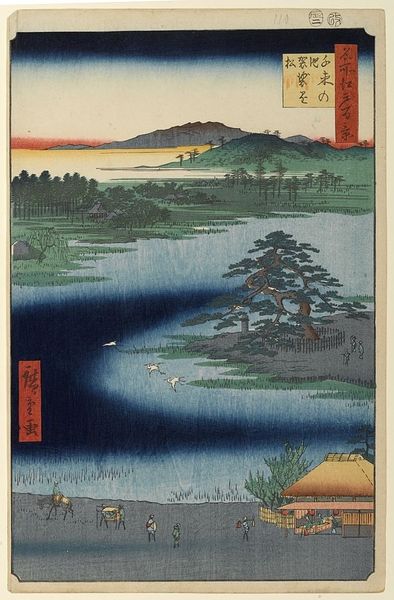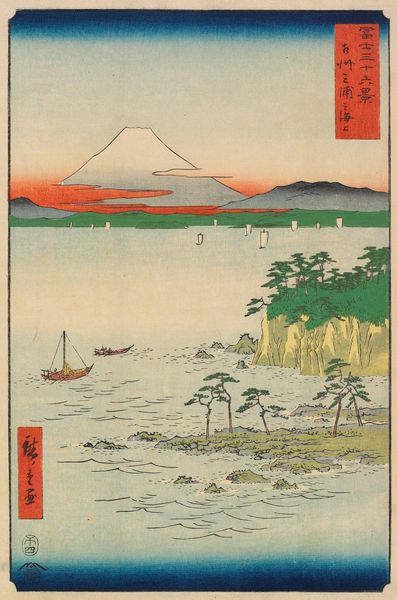
print, woodblock-print
# print
#
landscape
#
ukiyo-e
#
woodblock-print
Copyright: Public domain
Editor: Here we have Utagawa Hiroshige’s 1857 woodblock print, "70 (60) The Mouth of the Nakagawa River." The blue river dominates, punctuated by boats and rafts, and the whole scene has a serene, almost idyllic quality. What stands out to you? Curator: I see more than just a pretty picture, I see a carefully constructed view meant for a growing urban consumer base. Prints like these helped to shape the perception of Japan, both internally and for the West. Hiroshige isn’t just depicting a river; he's showcasing a vision of Edo life for those in the city to have a piece of the landscape, even when far away from the river. Editor: So it’s not just a landscape, it's about access and a developing image culture? Curator: Precisely. Consider the rise of Japonisme in the West – works like this contributed to a Western vision of Japan. The perspective, the flattening of space…all contributed to a specific *idea* of Japan circulating internationally through exhibitions and trade. This print itself becomes a cultural artifact in that exchange. Do you notice anything about the people shown? Editor: There are people on boats and rafts. What does this signify? Curator: The figures going about their daily business create an image of prosperity and tranquility, which may or may not reflect social realities at the time. Art often served political ends by constructing national narratives or social mores. This scene depicts commerce on the move. I find it curious that figures in the background are rendered more diminutively to accentuate depth. Editor: It’s fascinating how a single image can contain so many layers of meaning related to culture, politics and artistic expression. It definitely enriches my appreciation. Curator: Agreed, thinking of artworks not just as standalone beautiful things but cultural agents in their own right offers a much broader view of artistic expression.
Comments
No comments
Be the first to comment and join the conversation on the ultimate creative platform.
